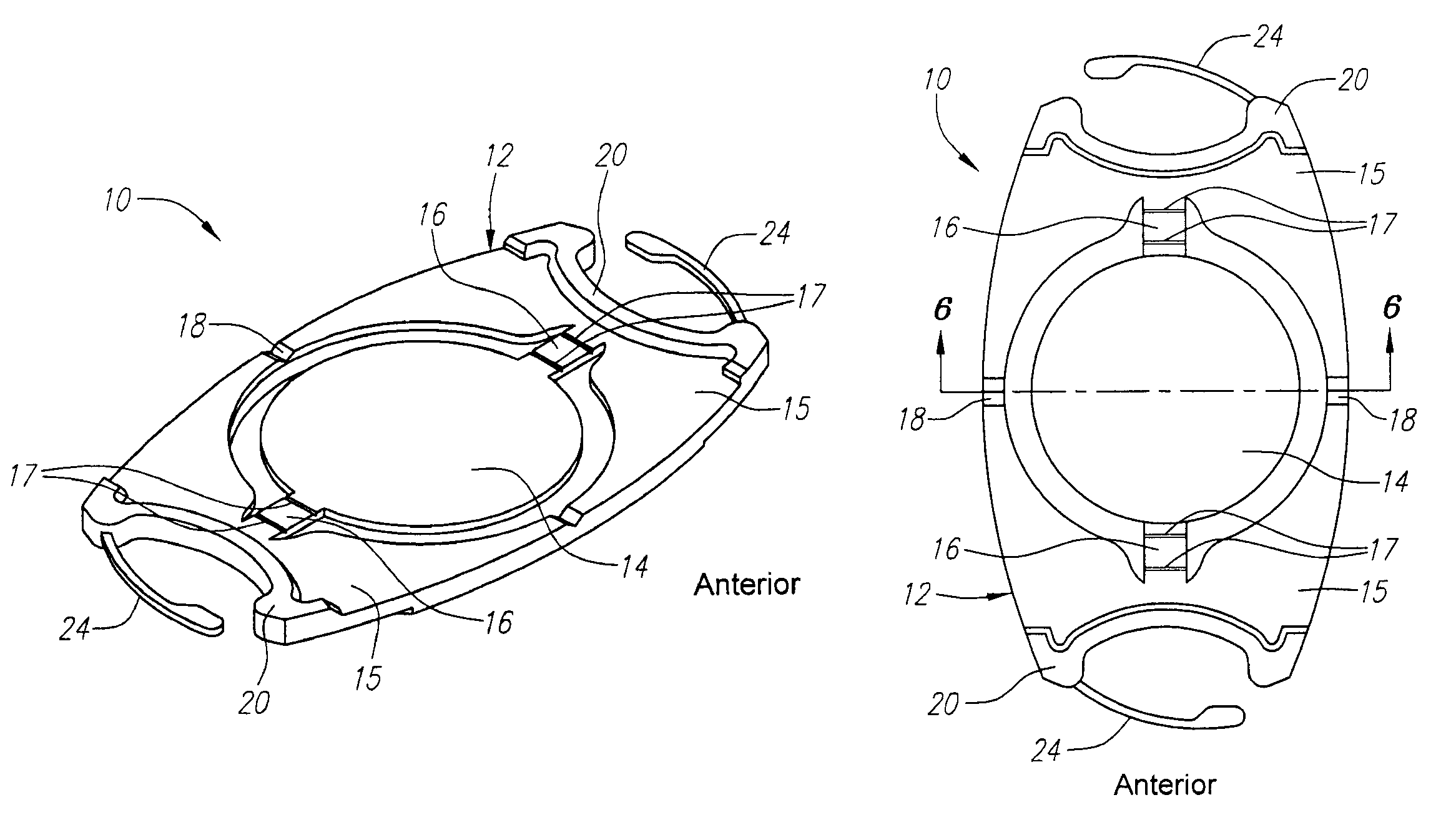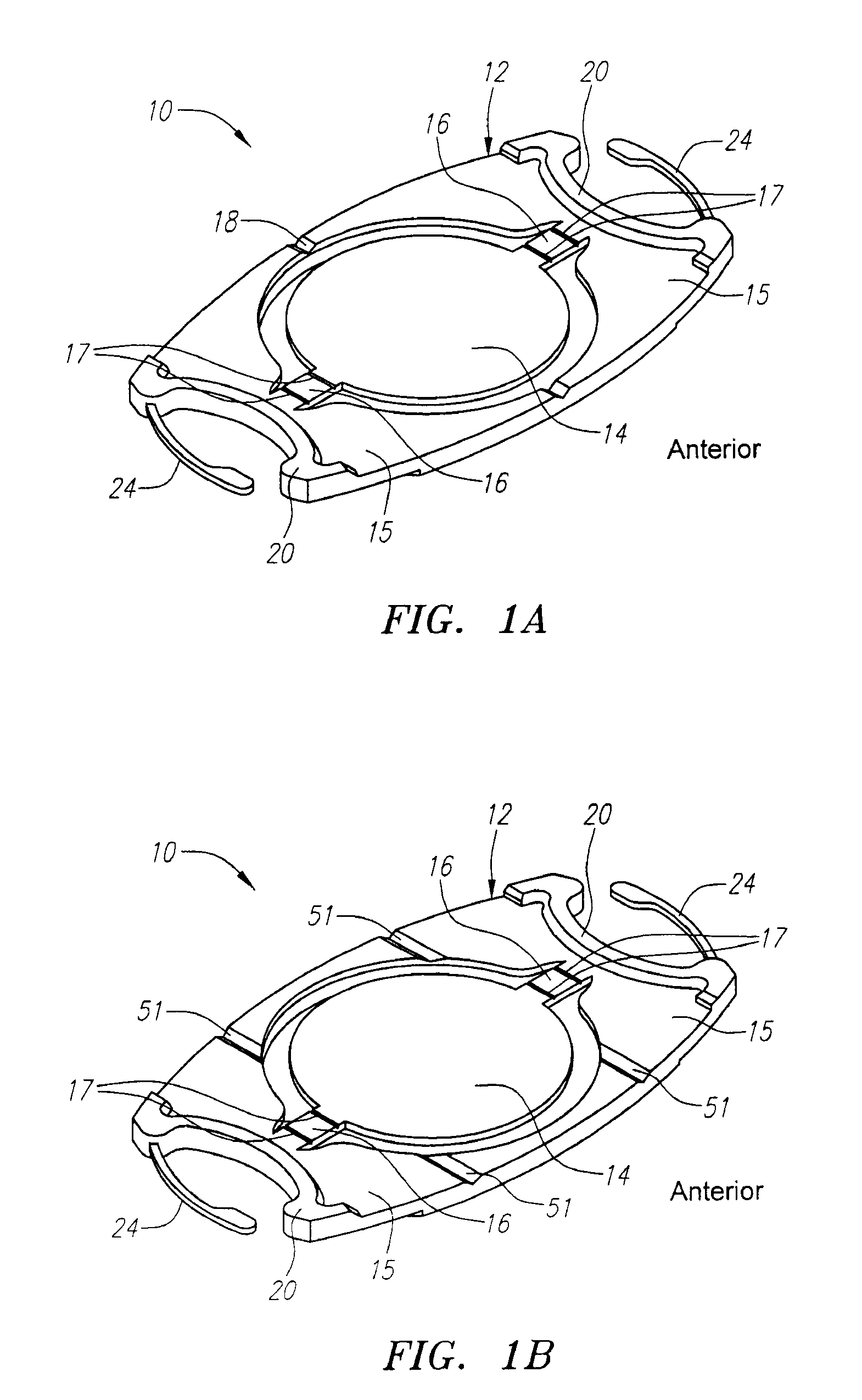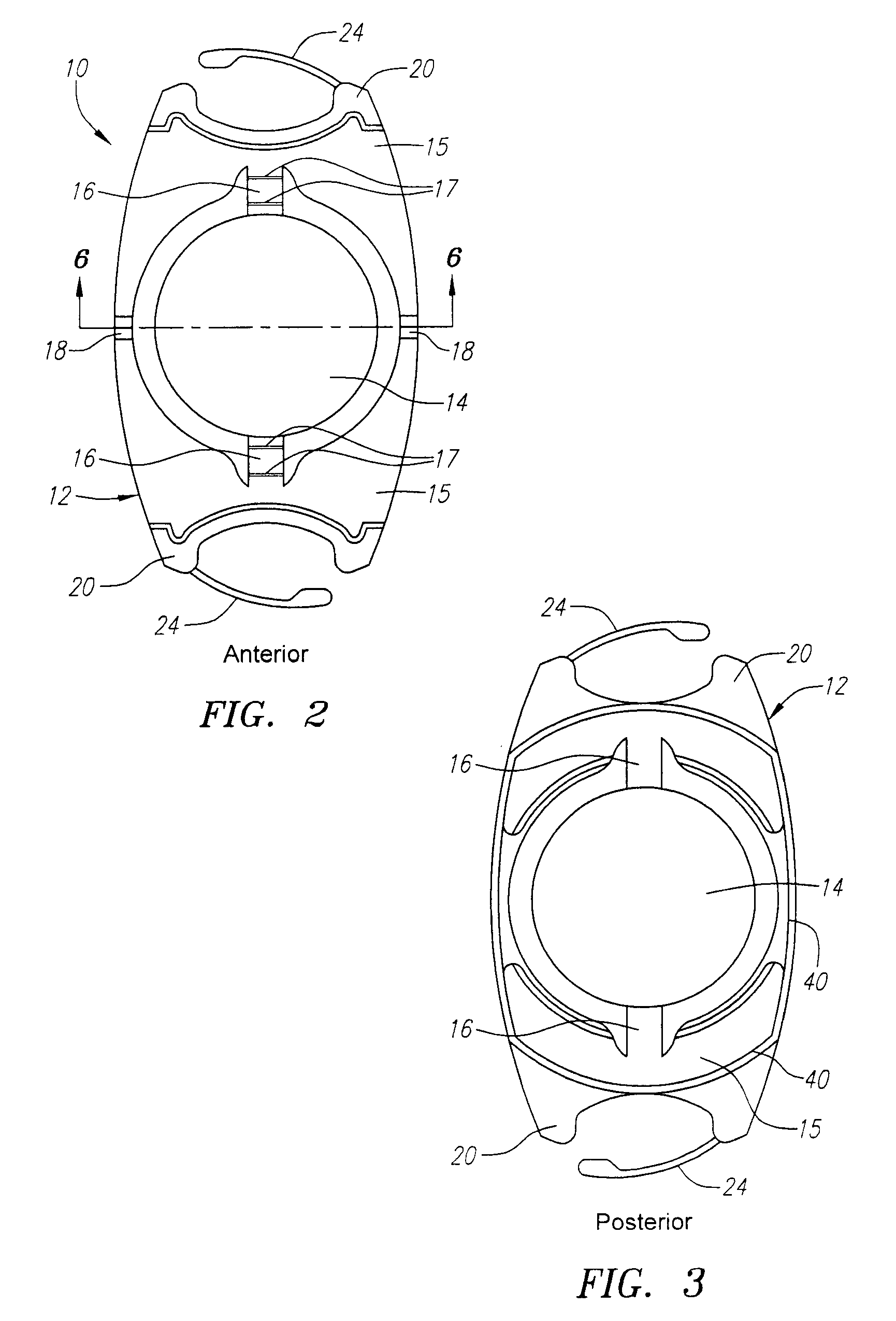"W" accommodating intraocular lens
a technology for intraocular lenses and lenses, applied in intraocular lenses, eye implants, medical science, etc., can solve the problems of limited materials from which the lens is made, the lens could be folded but not fixed well in the capsular bag,
- Summary
- Abstract
- Description
- Claims
- Application Information
AI Technical Summary
Benefits of technology
Problems solved by technology
Method used
Image
Examples
Embodiment Construction
[0018]Turning now to the drawings, FIG. 1a is a perspective view of the present lens 10 including a lens body or plate 12 and optic 14. The body 12 includes haptics 15. The body 12 and optic 14 are formed of silicone or other suitable flexible material. Straps 16 are provided between the body 12 and the periphery or outer diameter of the optic 14. Each strap preferably includes one or two hinges 17 on the anterior side of the lens, or no hinges. The straps may be 0.5 mm long in the radial direction and 0.25 mm thick to support the optic 14 by the straps 16. The optic 14 typically can have a diameter of 4.5-5.0 mm, a typical width of the overall lens 10 on the short side is 6.1 mm and the typical length from end to end (not including fixation fingers) on the long side is 10.5-11.5 mm. A typical optic thickness is 0.4-1.3 mm.
[0019]The body 12 and optic 14, as well as outer thickened footplate ends 20, are formed of silicone or other suitable flexible material. The lens 10 also prefera...
PUM
 Login to View More
Login to View More Abstract
Description
Claims
Application Information
 Login to View More
Login to View More - R&D
- Intellectual Property
- Life Sciences
- Materials
- Tech Scout
- Unparalleled Data Quality
- Higher Quality Content
- 60% Fewer Hallucinations
Browse by: Latest US Patents, China's latest patents, Technical Efficacy Thesaurus, Application Domain, Technology Topic, Popular Technical Reports.
© 2025 PatSnap. All rights reserved.Legal|Privacy policy|Modern Slavery Act Transparency Statement|Sitemap|About US| Contact US: help@patsnap.com



